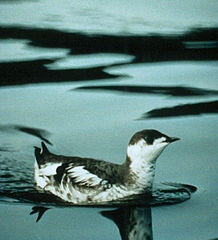
The team compared the ratios of stable isotopes of carbon and nitrogen in the feathers, which revealed what the birds ate. They learned that, in the 19th and early 20th centuries, murrelets relied heavily on sardines, anchovies and squid. But as decades passed, anchovy, sardine and squid stocks plummeted due to overfishing and cooling waters.
The birds turned to less nutritious and lower-calorie inshore fish and krill, a move down the food chain that is threatening its survival and ability to feed their young, which wait dozens of miles away in nests high in old-growth forest tree branches for food.
This retrospective research is "a classic example of why natural history collections are important," noted the manager of Burke's Museum ornithology collection at University of Washington. "The only way to learn new things about past populations is by utilizing specimens that were collected and archived before the questions were asked.”